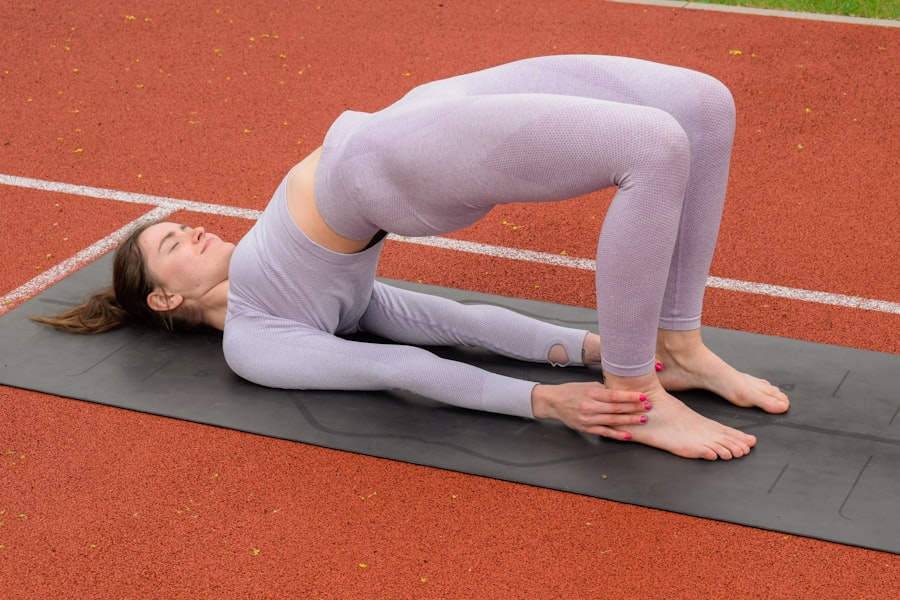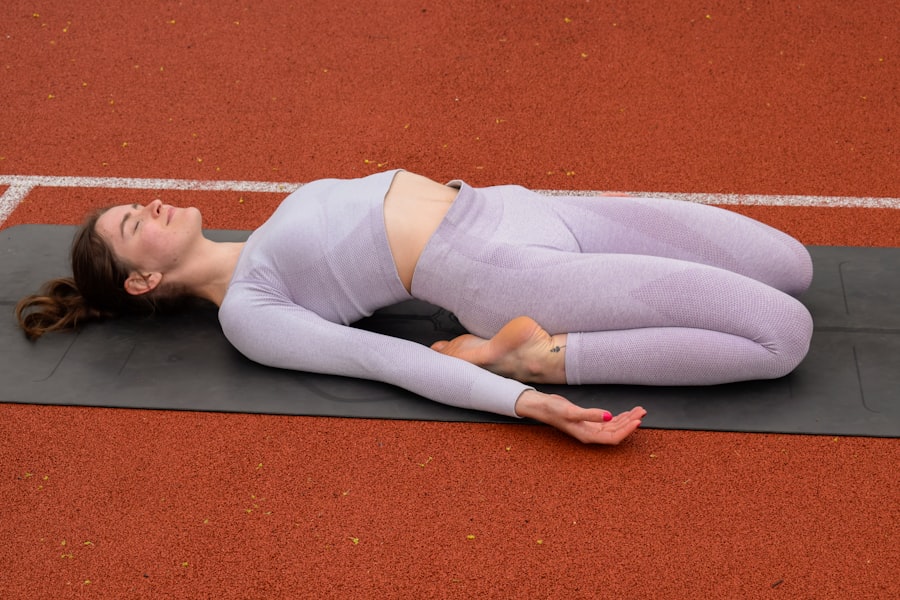Grounding is a practice that connects you to the Earth, helping you to feel centered and balanced amidst the chaos of daily life. In a world filled with distractions and constant stimulation, grounding serves as a vital tool for emotional and mental stability. When you ground yourself, you create a sense of safety and security, allowing you to navigate challenges with clarity and resilience.
This connection to the Earth can help you release negative energy and cultivate a more positive mindset, ultimately enhancing your overall well-being. Moreover, grounding is not just about feeling good; it has profound implications for your physical health as well. Research suggests that grounding can reduce inflammation, improve sleep quality, and even enhance your immune response.
By establishing a connection with the Earth, you allow your body to absorb its natural energy, which can lead to a greater sense of vitality. Understanding the importance of grounding is the first step toward incorporating it into your daily routine, enabling you to harness its benefits for both your mind and body.
Key Takeaways
- Grounding helps to bring balance and stability to our energy and emotions.
- Deep breathing exercises can help center and calm the mind, promoting a sense of grounding.
- Spending time in nature can help us feel more connected and grounded.
- Meditation can be a powerful tool for finding inner peace and grounding ourselves.
- Engaging in physical movement, such as yoga or walking, can help ground our energy and release tension.
Breathing Techniques for Centering Yourself
Breathing techniques are powerful tools for centering yourself and achieving a grounded state. When you focus on your breath, you bring your awareness back to the present moment, allowing you to release tension and anxiety. One effective technique is the 4-7-8 breathing method, where you inhale deeply through your nose for four counts, hold your breath for seven counts, and then exhale slowly through your mouth for eight counts.
This rhythmic pattern not only calms your nervous system but also helps you reconnect with your body, fostering a sense of stability. Another technique you might find beneficial is diaphragmatic breathing, which involves engaging your diaphragm fully while breathing. As you inhale deeply, allow your abdomen to expand rather than just your chest.
This method encourages deeper breaths and promotes relaxation. By practicing these breathing techniques regularly, you can create a habit of returning to your center whenever life feels overwhelming. The simple act of focusing on your breath can serve as an anchor, helping you remain grounded in any situation.
Connecting with Nature to Ground Your Energy

Nature has an incredible ability to ground your energy and restore balance in your life. When you immerse yourself in natural surroundings, whether it’s a walk in the park or a hike in the mountains, you tap into the Earth’s energy, which can be incredibly rejuvenating. The sights, sounds, and smells of nature stimulate your senses and remind you of the beauty that exists outside of your daily routine.
This connection can help alleviate stress and anxiety, allowing you to feel more at peace with yourself. To deepen this connection, consider engaging in activities that foster a sense of presence in nature. You might choose to practice mindfulness while walking barefoot on grass or sand, feeling the texture beneath your feet as you breathe in the fresh air.
Alternatively, sitting quietly by a body of water or under a tree can provide a serene environment for reflection and grounding. By making time to connect with nature regularly, you cultivate a deeper appreciation for the world around you and enhance your ability to stay grounded in everyday life.
Using Meditation to Find Your Center
| Benefits of Meditation | Techniques | Duration |
|---|---|---|
| Reduced stress | Mindfulness meditation | 10-20 minutes |
| Improved focus | Transcendental meditation | 20 minutes, twice a day |
| Enhanced self-awareness | Loving-kindness meditation | 15-30 minutes |
Meditation is a powerful practice that can help you find your center and maintain a grounded state. By dedicating time each day to sit in stillness and focus inward, you create space for self-reflection and clarity. Meditation allows you to observe your thoughts without judgment, helping you detach from negative patterns that may be causing stress or anxiety.
There are various forms of meditation that can aid in grounding. For instance, guided meditations often incorporate visualization techniques that help you imagine roots extending from your body into the Earth, anchoring you firmly in place.
Alternatively, mindfulness meditation encourages you to focus on your breath or bodily sensations, bringing your attention back whenever it wanders. Whichever method resonates with you, committing to a regular meditation practice can significantly enhance your ability to stay centered and grounded throughout your day.
Grounding Exercises for Physical Movement
Incorporating physical movement into your grounding practice can be incredibly beneficial for both your body and mind. Grounding exercises help release pent-up energy and tension while promoting a sense of stability. Simple activities like yoga or tai chi encourage mindful movement, allowing you to connect with your body while fostering balance and flexibility.
These practices emphasize awareness of your physical sensations and breath, helping you stay present in the moment. You might also explore more dynamic forms of movement such as dancing or walking briskly outdoors. Engaging in these activities allows you to feel the rhythm of your body while connecting with the Earth beneath your feet.
As you move, visualize yourself drawing energy from the ground up through your legs and into your core, creating a sense of strength and stability. By integrating grounding exercises into your routine, you not only enhance your physical health but also cultivate a deeper connection with yourself and the world around you.
Practicing Mindfulness to Stay Grounded

Mindfulness is an essential practice for maintaining a grounded state in today’s fast-paced world. By cultivating mindfulness, you learn to focus on the present moment without judgment or distraction. This practice encourages you to observe your thoughts and feelings as they arise, allowing you to respond thoughtfully rather than react impulsively.
As you become more aware of your internal landscape, you develop greater emotional resilience and clarity. To incorporate mindfulness into your daily life, start by setting aside a few moments each day for intentional awareness. This could involve simply sitting quietly and observing your surroundings or engaging in mindful eating by savoring each bite of food without distractions.
You might also practice mindfulness during routine activities like washing dishes or taking a shower by fully immersing yourself in the sensations and experiences of those moments. By making mindfulness a regular part of your life, you create opportunities for grounding that can help anchor you amidst life’s uncertainties.
Creating a Sacred Space for Grounding
Creating a sacred space in your home or environment can significantly enhance your grounding practice. This space serves as a sanctuary where you can retreat to reconnect with yourself and recharge your energy. To design this space, consider incorporating elements that resonate with you personally—such as crystals, plants, candles, or meaningful artwork—that evoke feelings of peace and tranquility.
When setting up your sacred space, think about how it can engage all of your senses. Soft lighting can create a calming atmosphere while soothing scents from essential oils or incense can promote relaxation. You might also include comfortable seating or cushions where you can sit or lie down during meditation or reflection.
By intentionally crafting this space, you establish a physical reminder of the importance of grounding in your life, making it easier to return to that centered state whenever needed.
Utilizing Crystals and Stones for Grounding
Crystals and stones have long been associated with grounding energy due to their natural properties and vibrations. Many people find that certain crystals can help anchor their energy and promote feelings of stability and security. For instance, black tourmaline is known for its protective qualities, while hematite is often used for its ability to ground excess energy effectively.
To incorporate crystals into your grounding practice, consider carrying them with you throughout the day or placing them in your sacred space.
As you work with these crystals, take note of how they make you feel; this awareness can deepen your connection to their energy and enhance their grounding effects.
Incorporating Aromatherapy for Grounding
Aromatherapy is another effective way to support your grounding practice through the use of essential oils derived from plants. Certain scents have calming properties that can help soothe anxiety and promote relaxation. For example, lavender is renowned for its ability to reduce stress while cedarwood is often associated with feelings of stability and strength.
To incorporate aromatherapy into your routine, consider using essential oils in a diffuser or adding them to bathwater for a relaxing soak. You might also create personal blends by mixing different oils that resonate with you—experimenting until you find combinations that evoke feelings of grounding and tranquility. By engaging with these scents mindfully, you create an additional layer of support for maintaining a grounded state throughout your day.
Seeking Support from Spiritual Guides for Grounding
Many individuals find comfort in seeking support from spiritual guides or mentors when it comes to grounding practices. Whether through meditation, prayer, or simply asking for guidance during challenging times, connecting with these spiritual resources can provide reassurance and clarity as you navigate life’s ups and downs. Your spiritual guides may offer insights that help ground you in times of uncertainty or confusion.
To deepen this connection with spiritual guides, consider setting aside time for reflection or journaling about your experiences and feelings related to grounding. You might also explore different spiritual traditions or practices that resonate with you personally—such as shamanic journeying or connecting with nature spirits—to enhance this relationship further. By inviting spiritual support into your grounding journey, you create an additional layer of strength that can help anchor you during turbulent times.
Maintaining a Grounded State in Daily Life
Maintaining a grounded state in daily life requires consistent effort and intention but can lead to profound benefits for both mental clarity and emotional well-being. Start by integrating small practices into your routine—such as mindful breathing exercises during breaks at work or taking short walks outside during lunch—to help keep yourself anchored throughout the day. Additionally, consider establishing boundaries around technology use; limiting screen time can reduce distractions that pull you away from being present in the moment.
Prioritizing self-care activities—such as spending time in nature or engaging in creative hobbies—can also foster feelings of grounding by allowing space for reflection and rejuvenation amidst life’s demands. By consciously choosing practices that support grounding within daily life—whether through mindfulness techniques or nurturing connections with nature—you empower yourself to navigate challenges with grace while cultivating an enduring sense of stability within yourself.
During a spiritual awakening, grounding yourself can be an essential practice to maintain balance and clarity. Techniques such as mindfulness meditation, spending time in nature, and practicing deep breathing exercises can help anchor your energy and keep you centered. For more insights on how to effectively ground yourself during this transformative period, you might find the article on Unplugged Psych particularly helpful. It offers practical advice and strategies to navigate the challenges of spiritual awakening while staying connected to the present moment.
FAQs
What is grounding during awakening?
Grounding during awakening refers to the practice of connecting with the present moment and the physical world in order to maintain a sense of stability and balance during a period of spiritual or personal growth.
Why is grounding important during awakening?
Grounding is important during awakening because it helps individuals stay connected to reality, maintain mental and emotional stability, and integrate spiritual experiences into their daily lives.
How can I ground myself during awakening?
There are several techniques for grounding yourself during awakening, including spending time in nature, practicing mindfulness and meditation, engaging in physical activity, and using grounding exercises such as deep breathing and visualization.
What are the benefits of grounding during awakening?
The benefits of grounding during awakening include increased mental clarity, emotional stability, reduced anxiety, improved focus, and a greater sense of connection to the present moment and the physical world.
When should I practice grounding during awakening?
It is beneficial to practice grounding techniques during awakening whenever you feel overwhelmed, disconnected, or ungrounded. Additionally, incorporating grounding practices into your daily routine can help maintain a sense of balance and stability throughout the awakening process.



